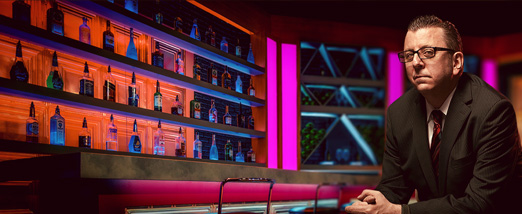WHITE NOISE: 3 STARS. “a mix of Robert Altman and ‘Family Ties.'”
Director Noah Baumbach has made idiosyncratic movies in the past like “The Squid and the Whale,” “Margot at the Wedding” and “While We’re Young.” But his new film, “White Noise,” an adaptation of the 1985 novel of the same name by Don DeLillo, now playing in theatres before moving to Netflix in December, may be his quirkiest to date.
Adam Driver is Professor Jack Gladney, a middle-aged college lecturer whose life’s work is the study of Adolph Hitler’s rise to power. He is a superstar in the world of academia, and a loving father to the blended family he shares with elaborately coiffed wife Babette (Greta Gerwig). In his quiet moments, however, he is obsessed with mortality, afraid that he will outlive his wife, and be left alone.
Babette, or “Babo” as the family calls her, also has a secret. She’s been taking an experimental drug, one that makes her forgetful and furtive.
In the second of the film’s three act structure, the family’s day-to-day lives are turned upside down when a nearby railway accident unleashes a toxic cloud over their town. Forced to evacuate and take shelter from the “Airborne Toxic Event,” they hit the road, and, in new circumstances, cracks in the family structure are revealed.
The final sequence manages to both tie up loose ends while taking the story in a completely new and unexpected direction toward murder, mortality and moral turpitude.
There is much to enjoy in “White Noise.” Gerwig and Driver seem born to recite Baumbach’s dialogue, bringing dry humor to the ever-escalating situations the Gladneys find themselves in. Lines that wouldn’t necessarily read as amusing on the page are brought to life by the delivery of these two perfectly cast actors. A third act back-and-firth between them, a cleaning of the air scene, is masterfully played, poignant and peculiar at the same time.
Baumbach also nails the 1980s time period, in both style and attitude, sharpening the satire with a vintage look that could have been borrowed from any number of contemporaneous sitcoms or big screen comedies. Also, this may be the one and only movie that can cite “National Lampoon’s Vacation” and “Barry Lydon” as stylaistic inspirations.
The look elevates the hectic family scenes, with everyone speaking over one another, wandering in and out of frame, like a mix of Robert Altman and “Family Ties.”
But, and I wish there wasn’t a but, a lack of cohesion between the film’s three sections gives it a disjointed feel, almost as if you’re watching a trio of short films with the same cast and characters. The clear-eyed lucidity of the opening act drifts as the running time sneaks toward the end credits. Once the movie leans toward the spectacle of the “Airborne Toxic Event” it loses its way, valuing the unwieldy, bewildering consequences of Jack and Bobo’s existentialism over clarity.
There are funny, satiric, enjoyable moments and performances in “White Noise,” but the initial suburban satire loses its way, succumbing to the busy script’s white noise.
